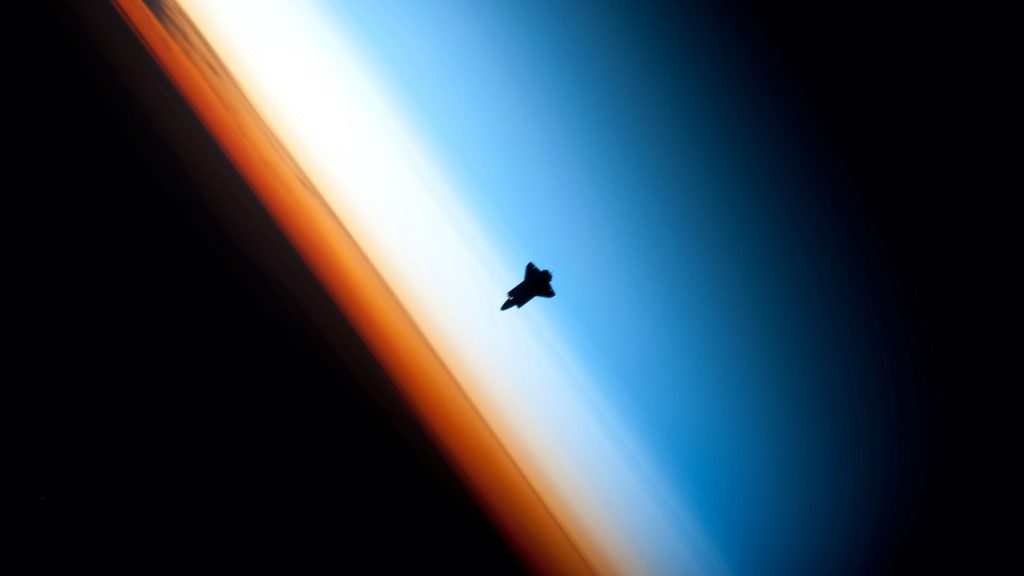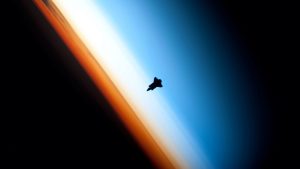At Varada, AI isn’t just a buzzword. It’s the backbone of how we build, deploy, and sustain real-world solutions across federal and defense missions. From predictive analytics to deep learning, AI is embedded in our core products and solutions like JIVA360 and BEDDE to drive faster decisions, mission readiness, and operational clarity.
Nowhere is that mission more visible than at NASA.
Melanie Frost, a Remote Sensing Imagery Analyst supporting NASA’s Center for Climate Simulation, is helping define the future of AI-powered geospatial intelligence. Her work under Varada’s NACS contract shows how advanced models and automation can deliver mission-critical insights at scale.
Mapping What’s Never Been Mapped
Working out of NASA’s Goddard Space Flight Center, Melanie uses satellite data and machine learning to uncover new terrain. One of her key projects involved the ICESat-2 satellite, launched in 2018 to measure changes in Earth’s ice. Firing 10,000 lasers per second, ICESat-2 enables canopy height estimation across North America’s boreal forests.
Using Random Forest algorithms, Melanie’s team built a model trained on 30 billion data points to predict how those forests will evolve over the next century.
“ICESat-2’s data allows us to estimate how tall the trees are in an area by measuring the difference between laser points that bounce off the Earth and those that bounce off the tree canopies,” she explains. “This helps us understand changes in forest structure over time.”
Building Foundation Models at Scale
Melanie’s team is also building a foundational AI model for MODIS satellite surface reflectance, a dataset that spans over two decades. With access to supercomputers at the NASA Center for Climate Simulation, the goal is simple: reduce the time to insight.
“We want scientists to query these models the same way you might use ChatGPT,” Melanie says. “Immediate answers. No need to label data or spin up compute.”
This approach aligns with NASA’s open science priorities, ensuring that data and AI outputs are accessible to researchers and policy makers around the world.
Solving Global Problems with Local AI
From Senegal to Saturn’s moons, Melanie’s team applies AI for classification and prediction. In one project, their models identified crop types in West Africa, helping local agencies with agricultural planning. In another, machine learning uncovered five times more craters on Saturn’s moons than previously known.
“This work helps us classify massive spatial datasets quickly, supporting everything from food security to space exploration,” she says.
Supercomputing That Shrinks the Impossible
Behind these breakthroughs is Discover, a NASA supercomputer that runs 8,000 trillion operations per second. One recent simulation of a black hole, which would have taken a decade on a laptop, was completed in just two weeks using Discover.
“We’re running models that simply weren’t possible before. That’s the level of capability we’re unlocking,” says Melanie.
AI, But Make It Ethical
Melanie is clear about the risks: biased datasets, unvetted outputs, data access concerns. NASA handles this by building in-house capabilities, reviewing training data, and holding AI models to rigorous ethical standards.
“AI is only as good as the data it’s trained on. We have to stay vigilant to ensure outcomes are accurate and fair,” she explains.
From Air Force to Earth Science
Melanie came to Varada by way of the Air Force, where she focused on human performance analytics. Today, she’s a leader in planetary science and a mentor for the next generation of scientists.
“This is my dream job. I get to work with people solving the hardest problems on Earth and beyond,” she says.
She encourages students and young professionals to explore internships like OSTEM, Pathways, or DEVELOP. These programs helped launch her own career.
Why This Matters for Federal and Defense Agencies
Melanie’s work reflects what Varada delivers across every engagement: operational AI, powered by real compute, driving real outcomes. From automating DevSecOps pipelines to powering cross-domain intelligence, we build the infrastructure that turns data into decision advantage.
Her story is one example of how Varada helps federal agencies unlock the full potential of AI. No hype. No handwaving. Just impact, delivered with discipline.
Want to bring this level of AI integration to your mission?
Reach out to our team.





